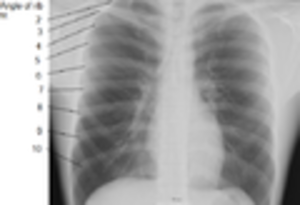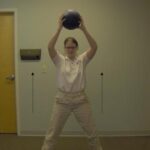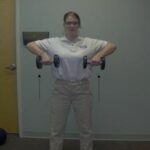Costochondritis is an inflammation of the cartilage that connects the ribs to the breastbone. It can be acute, lasting a few weeks, or chronic, lasting indefinitely. The causes can vary, and in many cases, there is no clear cause.
The typical person with costochondritis has medium to severe chest pain that is worse near the sternum (breastbone.) The pain often radiates either around to the back or up to the shoulders and down the arms. Less often, it radiates towards the abdomen. The pain may be severe enough to make breathing normally difficult. The pain worsens with movement, exercise, or deep breathing, and lessens during rest.
Acute costochondritis often follows chest surgery or an upper respiratory infection. When it follows surgery, it is most likely a bacterial infection and will respond to antibiotics. When it follows a viral respiratory infection, it is most likely caused by a virus and will clear up on its own in a few weeks. Sometimes costochondritis will follow an injury or trauma to the chest area, or a series of minor traumas (as in the case of sports players). In this case, costochondritis also usually, although not always, clears up in four to six weeks with no specific treatment.
Chronic costochondritis is a common symptom of fibromyalgia, a rheumatic syndrome characterized by wide spread muscle pain. Sixty to Seventy percent of all fibromyalgia patients experience costochondritis at some point during their lives. Patients with fibromyalgia may have bouts of costochondritis lasting indefinitely throughout their lives. Chest pain can vary from a dull gnawing sensation affecting most of the rib cage to sharp pains near the upper sternum often on the left side. Ribs will usually feel sore to the touch. It is believed that repetitive activities including sitting at a desk or computer can exacerbate the condition.
Whether costochondritis is caused by an infection or a chronic condition, there are things you can do to lessen the discomfort and improve your quality of life. Get plenty of rest during flare ups. Experiment with different positions to find which ones work best for you for sleeping and resting. Don’t give up exercise, but take it easy. Gentle exercise tends to improve the condition, but it is important to listen to your body. If you are an athlete, work with your coach to develop an appropriate exercise plan to keep in shape until your condition improves without overstraining yourself or worsening the symptoms. Change position frequently. Sitting for a long time is often difficult, so if your job requires a lot of sitting, make sure that you take plenty of breaks to get up and move around. Use over the counter pain relievers or prescription pain relievers as recommended by your doctor.
As with any chest pain, if you think you have costochondritis, please see your doctor to rule out more severe conditions such as heart disease. These can be ruled out through testing, and your doctor can advise you on the treatment plan that is best for you.






